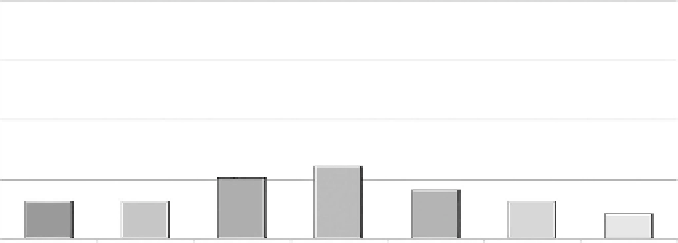Information Technology Reference
In-Depth Information
From the information placement questions it turns out that the new information
would be placed in the upper half of the screen and in the middle, whereas given
information would populate the middle level, but mostly the lower half. Such place-
ment confirms the prevalent mutual exclusiveness of such information. However, in
contrast to the left-right axis described by Kress and Van Leeuwen (2006), it follows
the top-bottom axis. The ideal information would be mostly confined to the top-left
quadrant, while the real would be placed in the middle left and center. The polarity
of the latter two kinds of information is not so strong. However, while the real in-
formation is connected to the central part of the screen, the ideal information tends
to populate the margins. Such a placement follows a central composition contrasting
(as in a mandala with the Earth in the middle and Heaven on the margins) with the
top-bottom axis suggested (Ibid.) for the Western (triptych) composition.
The Czech results showed also a preference for the center, but the strongest was
towards the central row of the matrix.
22) On a screen, where would you likely put images?
Chinese
Hypothesis.
Images placed symmetrically in the middle look better than on the left/right of the
screen.
Results summary.
Images were most often put in the middle-left part (30%) of the screen, because it is
aesthetically pleasing and straightforward. Top right was the second largest group of
answers (25%). The respondents were mostly concerned about the best combination
with text. Also, pictures in the top row, if interesting enough, would lead the user to
the text beneath. Middle center came third (20%), where images would get most of
the attention. Also, they could be surrounded by text, but the text would look better
to the left from the image. (See Figure 8.19.)
100
75
50
30%
25%
20%
25
15%
15%
15%
10%
0
To p
Left
To p
Center
To p
Right
Middle
Left
Middle
Center
Middle
Right
Bottom
Center
FIGURE 8.19
Placement of images on the matrix in the Chinese sample.










Search WWH ::

Custom Search